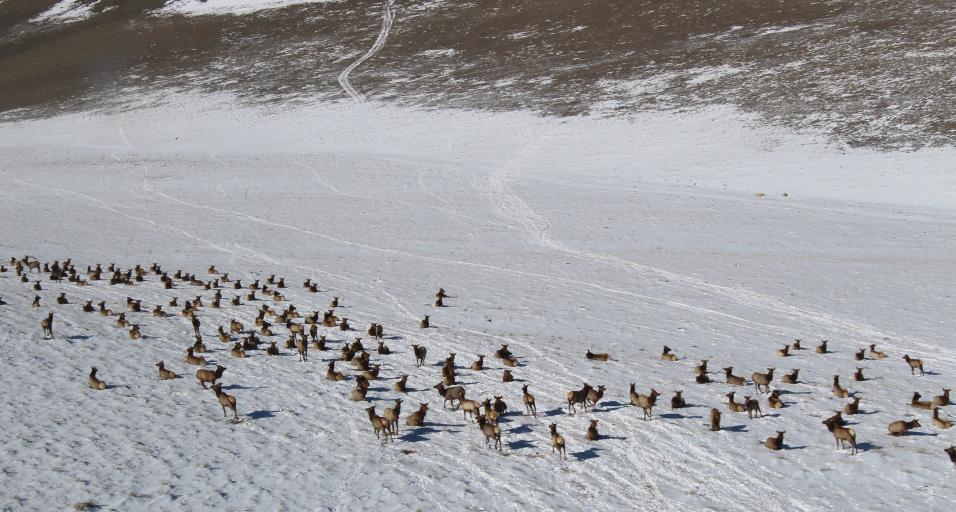Wildlife biologists and game wardens with the Wyoming Game and Fish Department conducted moose and elk surveys in the Sheridan Region in January and February. These surveys are conducted annually to gather information on current moose and elk numbers. The counts do not represent a definitive number of animals in a herd or hunt area, but rather give a representative sample of the population.
Moose: During surveys, moose are classified as bulls, cows or calves. These herd compositions or classifications provide information on calf production and survival as well as the proportion of bulls in the herd.
This year’s post-hunting season flight in Moose Hunt Area 34 was conducted via helicopter on January 31 which was later than in past years, due to unfavorable weather for flying earlier in the year.
A total of 46 moose were counted during the flight – eight bulls, nine cows, eight calves and 21 unknown. In 2018, 51 moose were counted during the annual survey, which was the highest post-hunting season moose count since 2008.
“The moose population in Hunt Area 34 appears to be fairly robust, with high counts the last two years,” said Buffalo Wildlife Biologist Cheyenne Stewart.
She also noted that 18 moose in Hunt Area 34 have been fitted with GPS collars as part of an ongoing habitat and movement study in the Bighorn Mountains and three of them were observed on this year’s flight.
A pre-hunting season survey of Moose Hunt Area 1 in the northern Bighorns was done at the end of August 2018. A total of 76 moose were observed – 16 bulls, 42 cows and 18 calves. This is a slightly higher number of observed moose compared to 2017, when 70 moose were counted.
Elk:
Gillette area
Hunt Area 2: A total of 387 elk were classified this year, compared to 332 elk last year.
Hunt Area 113: More elk were classified in this area this year than in previous years. A total of 378 elk were observed and classified this year, compared to 119 last year.
Hunt Area 123: One large group of elk was observed during the trend count this year that was estimated between 600 and 700 animals, a significant increase from last year’s count of about 400. Elk in this hunt area are difficult to locate and classify during counts due to the steep, forested terrain they inhabit.
Buffalo area
Hunt Area 33: 1,466 total elk were counted, an increase of 101 animals from 2018. The population has been fairly consistent since 2012 with expected annual variation.
Hunt Area 34: 2,370 total elk were counted. This count is almost 1,000 animals higher than last year, due to elk from hunt areas 35 and 49 wintering in Hunt Area 34.
Hunt Area 35: The count in this area was low for the third year in a row, but higher than the past two years. Two groups of elk were counted for a total of 528 elk. The Hunt Area 35 population is estimated at closer to 1,400 based on previous years' trend counts and the likelihood that elk from this hunt area are wintering and being counted in Hunt Area 34.
Hunt Area 36: The count was low this year, with a total of 510 elk counted, compared to 652 elk counted in 2018. Previous counts from 2011 to 2016 ranged from 824 to 1,074.
Sheridan area
Hunt Area 37: The count this year was lower than the previous year, with 1,822 elk observed on the postseason flight. The count in 2017 was 2,108.
Hunt Area 38: This area saw a higher number of elk observed than the previous year. 1,527 elk were counted this year, compared to 1,404.

